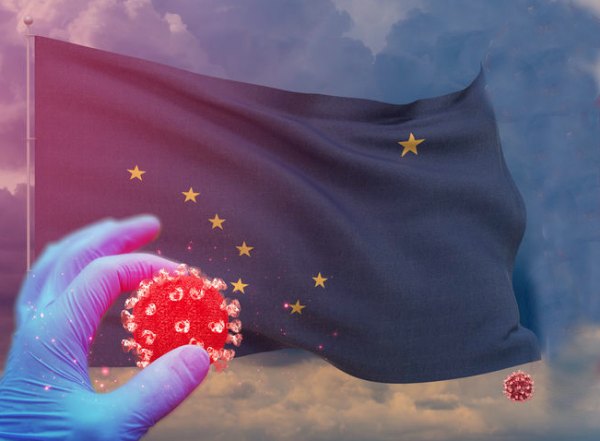By CRAIG MEDRED
What if one of the side effects of the SARS-Co-V-2 pandemic was to make some people healthier?
Crazy as it sounds, there is some reason to believe this could be happening. The BBC has fingered COVID-19, the disease caused by SARS-CoV-2, as “driving a revolution in travel,” and it’s not to jump on airplanes to see the world.
The English are increasingly getting around on foot or by bicycle. This shift to what is called “active travel” to shops, businesses and jobs has significant health benefits as the BMJ journal has pointed out.
And it would appear the English are not the only people that COVID-19 has inspired to get up, get out and get moving.
Strava, the leading sports platform for athletes of all sorts, reports activity uploads to its website jumped 33 percent in 2020. The data for Anchorage shows a cycling boom started in the 49th state’s largest city shortly after the pandemic began.
The start of the jump was likely tied to the Alaska lockdown coming at a time when snow and ice conditions were near ideal for fat-tire rides to the summer inaccessible Knik, Skookum and Spencer glaciers near Anchorage.
The boom didn’t end with the arrival of summer, however. As in the rest of the country, activity remained elevated.
Overall, Strava’s Year in Sport 2020 reported athletic activity in the U.S. up 28 percent above what was expected for March and April, and the boom continued through the summer here and in most countries where people were allowed out of their homes.
“At the global level, the COVID-19 pandemic resulted in a rise of activity on Strava like we’ve never seen before, far surpassing our normal projections,” the company said.
The health benefits of this change cannot be ignored.
Along with providing some protection against COVID-19 – healthy people have much better chances of surviving the disease than those suffering so-called “comorbidities” – an active lifestyle reduces the odds for all forms of death and cuts U.S. economic costs by billions.
Read the rest of this column at CraigMedred.news:

No comments? Really? I sent one yesterday that you have apparently censored. It was obviously a tongue-in-cheek humorous comment, but nothing sinister. You are censoring just like the liberals. I won’t be sending you anymore money.
The only upside, I can see, related to health, is mental health. The fear mongers and manipulators have been identified from the well meaning people who took rationale measures. The people who, psychologically, are completely dominated by, and therefore easily manipulated by, fear, have been separated from those who act reasonably but keep living their lives.
I think the clarity this has provided will serve to be a useful tool, for the latter; the relatively sane and discerning people, who, going forward, will inevitably have to rebuild from the ruin created by the former.
So, basically, what you’re saying is that exercise is good for you, but we need to scare you into doing it? I’m good with that.
But don’t forget to keep your distance and wear a mask and get vaccinated, because just being in good shape ain’t gonna cut it against the Coronavirus.
Hi, Craig. Enjoyed your comments and your take on one aspect of Covid’s impact on us. I think the increase in out of door activity is great and bound to improve our health. Let me extend this issue in a couple of directions, one good for health and one not so good:
GOOD: You covered activity but two reasons that our general health numbers are so improved are less discussed and less obvious. One thing: Once you have everyone masking, washing and distancing, infectious disease rates are bound to come down. It is due to general sanitization. Just like when surgical rates of infection dropped when docs started pre–surgical scrubs. Another aspect of the illness drop rate is unfortunately an illusion: With Covid out and about, many people avoid medical care settings (MD offices, clinics, hospitals, etc.) so, even if they are ill, they do not get counted in the medical contact statistics kept by insurance companies, government, etc. only later to emerge later much more ill. Less ‘contacts’ but much more severe illness
NOT SO GOOD: This is another aspect of the last sentence above: When people are fearful of seeking medical services, they avoid it or at least put it off. This dynamic suppresses utilization statistics BUT also results in a belated increase is disease and associated costs. When you do not treat a disease or delay examination, the later diagnosis and treatment are much more costly and less effective. Example: Woman puts off assessment of a lump in her breast so later, when she does go in, her 5 year survival will be significantly reduced.
Keep up the great work on the Blog; I love your Alaska insights and experiences as I am a ‘non–Native Native’ (grew up here on a homestead) lover of nature and this state.
Comments are closed.